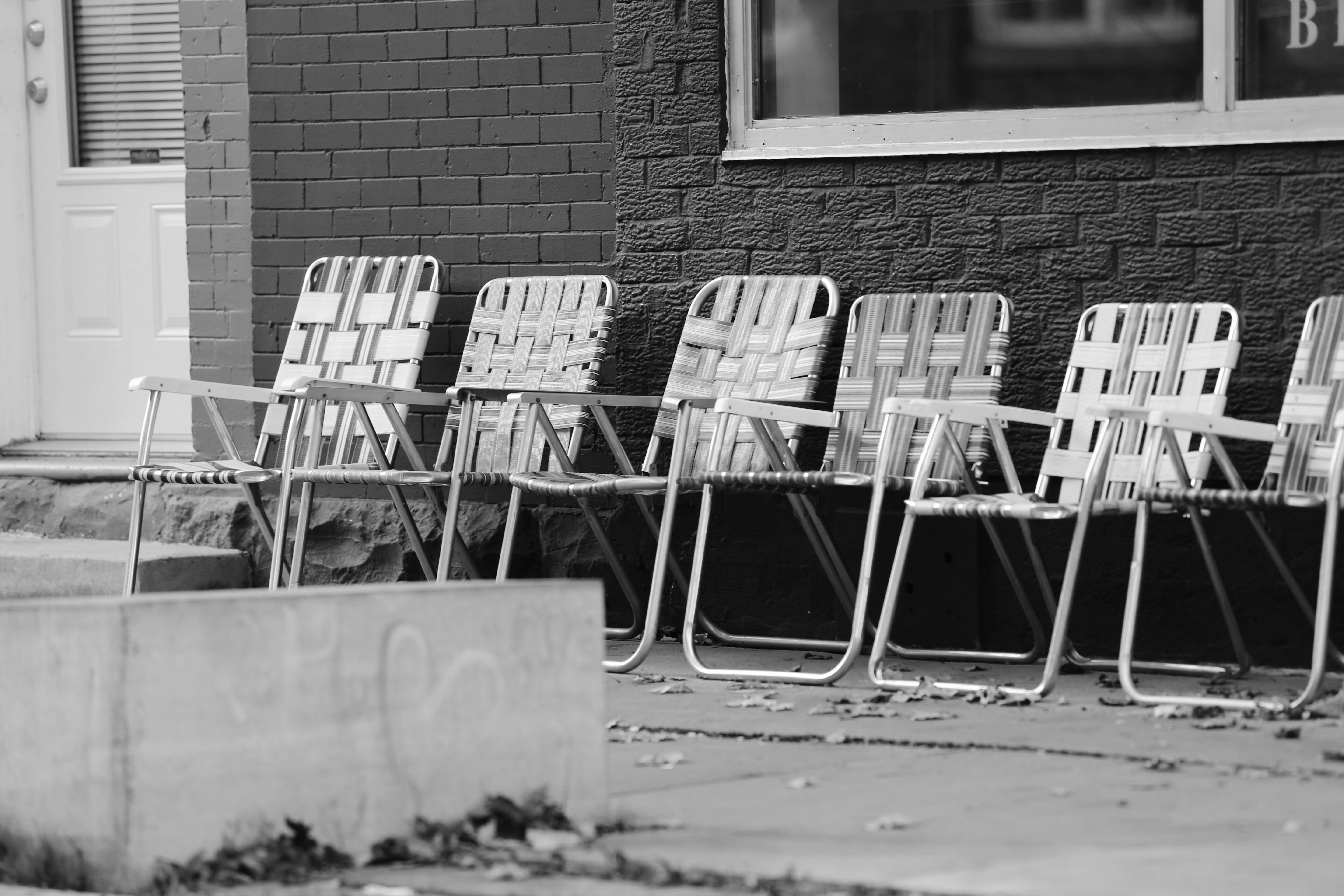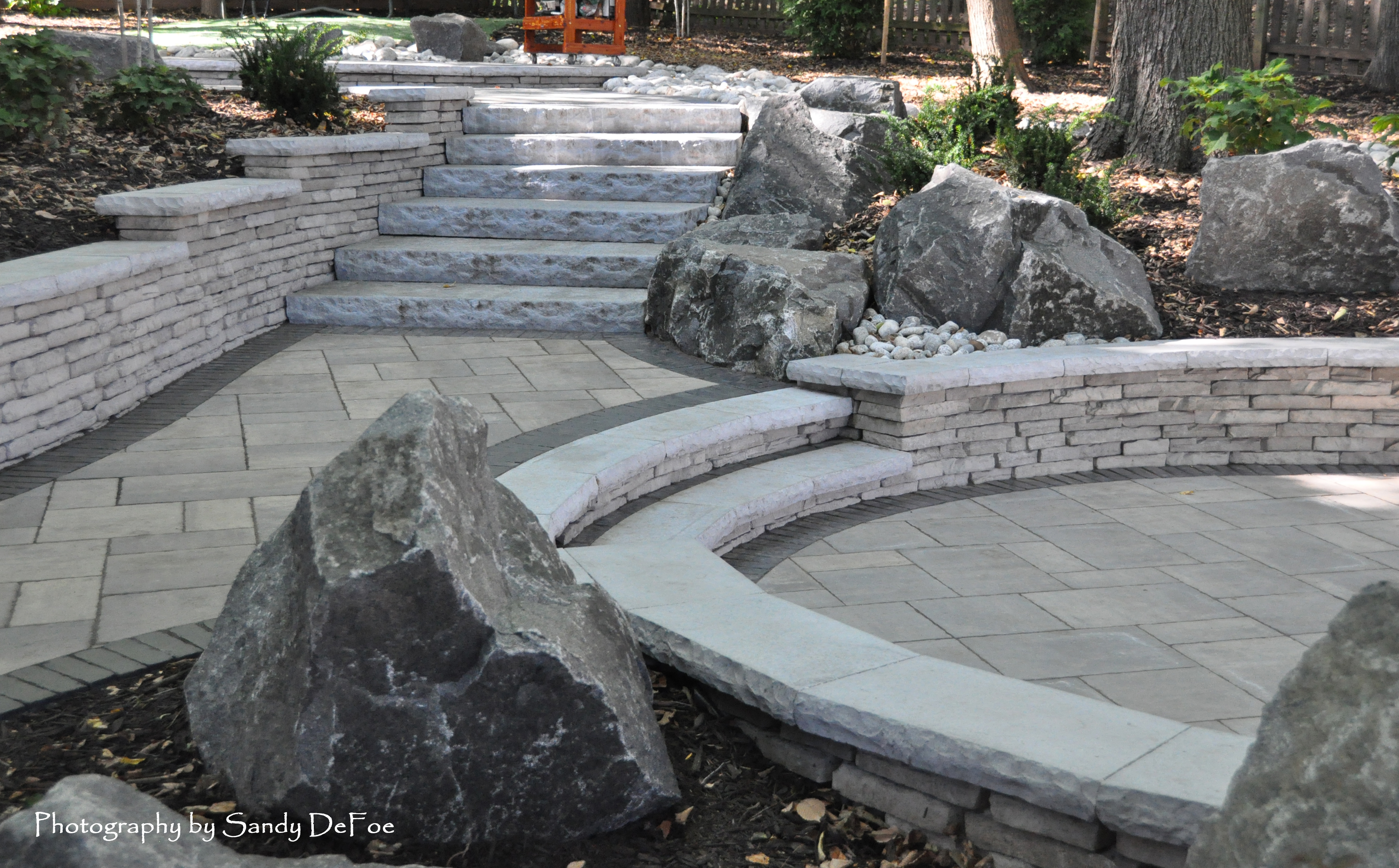By Sandra Nelson
July 1959 was an exciting time for my family; It was the year that my father made his mark on our neighborhood. He became a local celebrity by turning our backyard into what was then considered a lavish outdoor living space. Fired up by pictures he saw in magazines, my father built an ultra-deluxe concrete patio that was bordered by a two-foot wide flower bed. (Always planted in red geraniums.)
From that point on, weekends found my parents on that patio sitting in brand new aluminum lawn chairs (remember them — with the sticky plastic webbing) waving at the neighbors as they strolled by on their evening walks. Without a doubt, they were the envy of the block.
My parents’ patio was one continuous stretch of tinted concrete that followed the straight line of the house on its back, was curved in the front and came to an abrupt ending. It was fairly functional but certainly not aesthetically pleasing. Today, it would be considered a builder grade outdoor amenity that wouldn’t warrant a second glance from passers-by.
And with good reason…. Homeowners today are demanding beautifully designed, functional spaces that seamlessly connect their indoor living areas to the outdoors. They recognize the physical and emotional benefits of being fully connected to nature but also want to have the conveniences and luxuries of their indoor lifestyle.
Transforming a humdrum backyard into an attractive, livable space makes economic sense too. Depending on the complexity of the project, average costs for an upgrade or an installation have a range of $4000 to $24,000. However, in many parts of the country, outdoor living spaces, especially patios and decks, give a 100 to 110 percent return on investment at the time of sale. An outdoor space with three season use adds even more value to a home. Rental properties with luxurious outdoor living spaces — whether short term vacation rentals or long term leases — command higher prices than those without. In short, adding well-designed and well-implemented outdoor living spaces is worth the time, effort and expense.
Thankfully, today’s patio designs have finally broken free of the mold of the 10 x 12 concrete rectangle, allowing homeowners to have outdoor spaces that fit their unique tastes and lifestyles. Some homeowners seek designs that communicate a sense of place, utilizing the colors, shapes and textures of the natural world surrounding them.
Others look for designs that give a taste of far away places — perhaps a tropical island, a seaside cottage or a Japanese tea garden.
Still others see their outdoor areas as a way to enhance the architectural style of their beloved home while increasing its day to day living space.
For decades, a poured concrete pad was the only option for a backyard patio. Today, flat poured concrete is still a choice, but there are other (and often better,more attractive), options available. With a wider range of materials available now, turning the commonplace backyard patio into an extraordinary outdoor experience is an affordable luxury well worth pursuing.
One of the most popular and commonly seen materials for patio construction is the paver. They are sold everywhere from Lowes, Home Depot and Walmart to the corner hardware store and the local garden center.
However, just like many of the other products you routinely purchase, there are huge differences in the quality of pavers on the market. High end concrete pavers, like those produced by the industry leader Unilock, offer a multitude of benefits that the less expensive brands just can’t match.
High end concrete pavers are versatile. Sold in a wide range of sizes, colors, and styles and they can be used in a myriad of ways. They can be used to build steps and walkways, driveways and patios.
They can be formed to resemble everything from the textured look of natural stone and wood to the sleek surface of smooth tile. They feature a rainbow of fade resistant colors, everything from the brilliant shades needed for rich, warm designs to the relaxing soft hues perfect for a shady retreat. 
Unlike some other patio materials, high end pavers are durable, having a lifespan of 50 or more years. Over time, wooden surfaces tend to warp and may need to be repaired or replaced. When exposed to extreme temperature shifts or intense pressure, solid concrete surfaces can crack.
Because the surface is composed of smaller, individual pieces, surfaces made of pavers tend to be flexible and resist damage. If damage does occur, paver patios have an advantage. Rather than needing an extensive (and expensive) repair, pavers can be individually lifted and replaced.
Pavers require minimal routine maintenance. Other than sweeping away debris and hosing off accumulated grime, Unilock pavers need little upkeep. For those areas likely to encounter stains — like kitchens, dining areas and driveways — choosing a stain resistant paver can help alleviate problems before they begin.
Stormwater management is a critical environmental issue. Solid surfaces like poured concrete do not allow water to filter through, or permeate, to the ground. Instead the water either pools on the surface waiting to evaporate or has to be directed to a run-off system. Paver patios, because of their jointed design and base drainage layers, are permeable, allowing water to reach the ground level and naturally return to the water system. With many communities experiencing severe water shortages and groundwater pollution, permeable paver patio systems offer an environmentally healthy alternative to traditional concrete patios.
If the idea of a paver patio has you thinking, join us next week as we continue our patio series. We’ll show you some of the newest and best features you can add to have your ideal outdoor living space. See you then.













